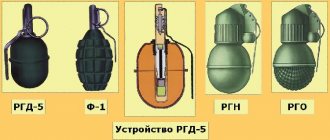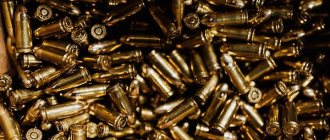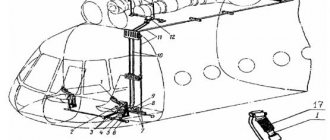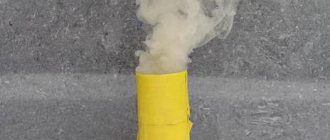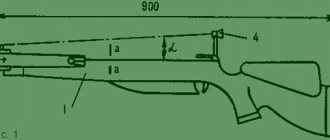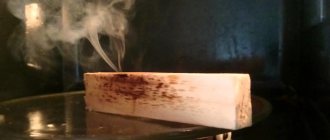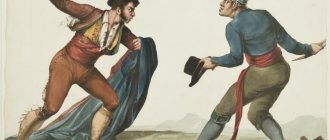Today, body armor is an integral part of a soldier’s equipment. But it was not always so. For a long time, a soldier on the battlefield was protected only by the thin fabric of a uniform or tunic. Although, in general, the history of personal protective equipment goes back more than one millennium.
A bulletproof vest is a personal protective equipment designed to protect a person (mainly his torso) from the effects of firearms and bladed weapons. It is made from various materials, the main feature of which is the ability to withstand the impact of a bullet, shrapnel or blade.
Nowadays, the value of a soldier’s life has increased many times over, so the creation of new, more reliable and advanced types is being carried out in many countries around the world. Very significant funds are spent annually on these developments.
of body armor , they are divided into classes: a light body armor will protect you from a pistol bullet, a knife and shrapnel, and heavy army body armor can stop a Kalashnikov assault rifle bullet. vest can be worn under clothing, which is great for intelligence officers and bodyguards.
How effective are body armor on the battlefield? One example can be given: according to statistics kept by the US Army , the use of body armor by military personnel reduced the number of injuries by 60%.
However, before talking about new developments in the field of body armor, a few words should be said about the history of this personal protective equipment .
Main characteristics of body armor
To have high protective properties, personal protective equipment must have exceptional characteristics of resistance to impact from a bullet or other objects. They also have other important features that allow them to be used without harm to health.
The best body armor have a certain set of characteristics:
- The required level of protection according to the class in which it was manufactured.
- Convenient operation.
- Camouflage appearance.
- Practical to use.
- High-strength fabric shell.
- Manufacturability during modernization.
- Convenient weight indicators.
- Test certificate of conformity.
A bulletproof vest, the price of which is quite high, must meet almost all of the listed characteristics. If the main ones are not met, then such products should be discarded and not allowed for sale.
Specialized body armor
For personal safety, several modifications of vests have been developed that can be worn under clothing and will not interfere. They are primarily used by bodyguards and high-ranking people. Such protective equipment is disguised as a vest, coat, or simply worn under a shirt in the form of a T-shirt. However, it is not always convenient to do business with them, since their significant weight creates certain difficulties. There are also separate developments of body armor for children. Their weight does not exceed 2 kilograms, and this is a big plus for those who use them.
Women were not spared either. Several models of body armor have also been developed for them, which can be worn concealed.
They are made with anatomical compliance and are convenient to use. However, it is not possible to increase the protection class for such vests beyond the fourth.
About choosing manufacturers: look at design and convenience
An important point: manufacturers mainly use the same materials, and the choice of material indicates the protection class, but not the quality of the product. That is why, when choosing between different manufacturers and models, you need to pay attention not to the materials, but to the design and construction: which body armor will be easier to hide under a shirt or T-shirt, which one has a larger protection area. It is also worth considering the features of adjustment and ease of fit.
The easier it is to adjust the body armor to your figure, the better
Body armor - how to choose the right one
Created 09/18/2014 12:01 8648
Current topic about the aspects of the correct choice of body armor: what to look for when choosing a body armor, how to understand the materials, what you need to know about standards, classification and certification. Nowadays, the number of people who understand weapons has increased; they actively discuss armored vehicles on the Internet, compare characteristics and buy uniforms for themselves and the Ukrainian army
Today, SIBZ (Individual Armor Protection Equipment) are becoming not only an object of interest, a hobby or the prerogative of bodyguards, but a real, sometimes the only, means that can save life. Body armor is bought and chosen, sometimes without understanding the essence at all, without understanding the terms. And this can lead to dire consequences as a result of their use in specific conditions - a mistake when purchasing SIBZ can be fatal
Nowadays, the number of people who understand weapons has increased; they actively discuss armored vehicles on the Internet, compare characteristics and buy uniforms for themselves and the Ukrainian army. Today, SIBZ (Individual Armor Protection Equipment) are becoming not only an object of interest, a hobby or the prerogative of bodyguards, but a real, sometimes the only, means that can save life. Body armor is bought and chosen, sometimes without understanding the essence at all, without understanding the terms. And this can lead to dire consequences as a result of their use in specific conditions - a mistake when purchasing SIBZ can be fatal.
To make the right choice, you need to know and take into account some parameters:
- Type of weapon against which body armor should provide protection
- Required area of body armor protection
- Type of wearing body armor: hidden or external
- Maximum permissible body armor weight
- Continuous wearing time
- Body armor size
The generally accepted term “body armor” covers completely different types of protective equipment.
Body armor can be:
- in the form of ready-made kits with plates or individual covers,
- for concealed or outdoor carrying,
- modular or with a sewn set of pouches.
For each case, you can choose the most suitable option.
Materials for plates can be:
- metal (titanium, steel - originally used),
- kevlar,
- ultra-high molecular weight polyethylene (UHMWPE),
- ceramics,
- metal ceramics.
Notes
- Gogel I. Detailed instructions on the manufacture, use and conservation of firearms and military weapons with 6 drawings. Archival copy dated December 3, 2013 on the Wayback Machine St. Petersburg, 1825.
- Cuirass // Soviet encyclopedic dictionary. ed., ch. ed. A. M. Prokhorov. 4th ed. M., “Soviet Encyclopedia”, 1986. p.578
- Guards cuirassier regiments // V. N. Shunkov, A. G. Mernikov, A. A. Spektor. Russian army in the First World War 1914-1918. M., AST, 2014. pp.44-45
- Konstantin Papulov. The first means of armor protection of the Russian police Archived copy of November 1, 2008 on the Wayback Machine // “Protection and Security”, No. 3, 2005
- Konstantin Papulov. From shell to body armor. // “Police”, No. 1, 2006. pp. 39-41
- ↑ 123
Simon Dunstan, Ron Volstad. Flak Jackets. 20th-century military body armor. (Men at Arms, no. 157). Osprey Publishing, 1990 - Alexander H. Dunlap. Bullet-proof vest. US Patent US2076076A (June 7, 1934)
- Heart guards for policemen are bullet-proof // Popular Mechanics magazine December 1931 page 926
- Body armor // Military encyclopedic dictionary. / ed. coll., ch. ed. S. F. Akhromeev. 2nd ed. M., Voenizdat, 1986. p.102
- GOKO Resolution No. GOKO-2442ss dated 10/23/1942 - to organize the production of steel armored breastplates at plant No. 700 Narkomchermet (Lysvensky), supply 47,000 pieces from 10-12/1942.
- P. I. Maksimov. Armored clothing. Copyright certificate of the USSR No. 64295
- Fighters in armor // Science and Life magazine, No. 2, 1941. p. 59
- Defensive weapons // Soviet military encyclopedia (in 8 volumes) / ed. N.V. Ogarkova. volume 3. M.: Voenizdat, 1977. pp. 430-432
- Yu. G. Veremeev. Body armor (Army Anatomy website)
- Sergey Alexandrov. Clothing that saves life // “Private investigation. Security. Security" No. 4, 1995. pp. 71-73
- Protection of helicopter crews // Military Bulletin, No. 5, 1967. pp. 124-126
- History of Soviet body armor (weapons portal Gunscity.ru)
- Body armor in Russia\USSR (undefined)
(inaccessible link). Weapons portal 9×19.su. Access date: May 6, 2016. Archived September 14, 2016. - A. Palladin. New items // “Izvestia”, No. 341 (20322) dated December 7, 1982. p.4
- Domestic army body armor (unspecified)
(inaccessible link). Access date: August 5, 2009. Archived October 14, 2009. - Shield for protection from a sword // “Safety. Credibility. Information", No. 3, 2006. p.92
- Leroy Thompson. Anti-terror. Hostage Rescue Guide. M.: FAIR PRESS, 2005. pp. 144-146
- Recommendations for choosing armor plates (undefined)
. (unavailable link) - ↑ 1 2 3
Protection classes of body armor according to DSTU
(unspecified)
. - Can a crossbow defeat body armor? -YouTube
Metal alloys and ceramics
If we compare protective equipment based on modern alloys and modifications that use traditional steel plates, they differ significantly in weight and functionality:
- Models made of aluminum - this material is lightweight, can be welded without problems and is strong enough to protect the wearer from being hit by a blade, shrapnel and bullet wounds;
- Titanium alloy is characterized by excellent mechanical properties and corrosion resistance;
- Ceramic armor – made on the basis of composite ceramic elements;
- Composite armor made of laminated plastic or a combination of viscous, elastic and highly hard material, for example, steel / aluminum + ceramics / quartz glass / corundum, etc.;
- Combined - multi-layer option.
Aluminum body armor.
The requirements for engineer body armor are much higher - they must be highly impact resistant. At the same time, the thickness and weight of such models are small, which makes it possible not to limit the user’s movement. Such properties are possible through the use of hydrophobized Kevlar and a special gel substance with nanoparticles - this combination allows you to increase the durability of the material several times.
What's next?
What will body armor in the foreseeable future? It is difficult to give an exact answer to this question. There are several interesting developments that could become a reality in the coming years.
Spider Web Body Armor
Americans are doing similar research. It has long been known that spider silk is one of the strongest compounds in nature. It is slightly inferior to Kevlar, but much more elastic than the latter. The US Military Department has allocated 100 thousand dollars to continue the research; if they are successful, the scientists will be allocated another million dollars.
Liquid body armor
Another interesting direction in the field of creating perfect armor is the development of body armor based on a special gel, which turns into a solid state upon impact. Thus, it seems to absorb the energy of a bullet or fragment.
Similar work is being carried out in several countries at once, and the developers promise to demonstrate practical results in the near future. In physics, such gels are called “non-Newtonian liquids.”
Experiments have shown that such a “gel” body armor is not inferior in its protective properties to thirty layers of Kevlar fabric.
Questions that arise when choosing body armor:
1. Is it true that body armor from foreign manufacturers is better than domestic and Russian ones? For example, Russian GOST R 50744-95 “Armoured clothing. Classification and basic requirements" (as amended on January 1, 1999) is one of the most "strict" in the world. So, for example, with regard to the over-barrier displacement (this is the displacement of the layers of body armor in the direction of action of the wounding projectile), then for foreign body armor its value can reach 30 - 40 mm. The amount of displacement for domestic body armor in accordance with the specified GOST should not exceed 20 mm. The materials from which domestic body armor is made are similar to imported ones. For example, the well-known Kevlar is the “twin” of the domestic fabric TSVM J.
2. Is it true that if the bullet does not penetrate the bulletproof vest, then the victim will not need help and there will be no damage? Damage can occur, and it can be quite serious. A bullet fired from a Makarov pistol (PM, bullet speed 315 m/s) has approximately the same kinetic energy as the impact of a two-kilogram sledgehammer. If a bulletproof vest stops a bullet, then part of the energy is transferred to it, and therefore to the human body. In this case, a so-called transobstructive (concussive) injury occurs, the severity of which is determined by the nature of the damaging agent, its speed and mass. The higher they are, the higher the kinetic energy of the projectile, the more serious the injury will be. In mild cases, skin abrasions, bruises, and subcutaneous hematomas are noted. In more severe cases - bone fractures, ruptures of large vessels, ruptures and crushing of internal organs. Therefore, the victim must immediately provide first aid at the scene of the incident and call a team of medical workers.
3. Is it true that a post-obstructive injury is more dangerous than a regular gunshot wound? A post-obstructive injury in some cases can be as dangerous as the direct effect of a wounding projectile. But, firstly, it is very difficult to predict the severity of a trans-obstructive injury due to the large number of factors that determine it (velocity and mass of the bullet, distance, angle of impact, etc.). And secondly, let’s imagine two versions of the same situation: a bullet hits the heart area of a person wearing a bulletproof vest and is delayed by it; the bullet hits the unprotected chest. In the first case, even if blood circulation stops, there is a real chance to restore it if you perform a complex of basic cardiopulmonary resuscitation. In the second case, the victim does not have the slightest chance due to the destruction of the heart. In addition, modern body armor widely uses CAP (climatic shock-absorbing support), which reduces the severity of retrograde injury.
4. Is it possible to test the protective properties of a bulletproof vest yourself? Let’s give examples from life. In March 1983, in military unit N of the Ural Military District, warrant officers Ch. and U., “out of hooligan motives,” put on body armor and staged a “duel.” They fired from PM pistols from a distance of 18 - 22 meters. Ch. missed. Ensign U. hit Ch. in the right side of the chest, but the bullet did not penetrate the armor plate. The result of the hit was that 4 ribs were broken and the right lung was crushed, which had to be removed. Ch.'s death occurred on the third day. On July 1, 2003, at 23.20, in the premises of a commercial bank, a 38-year-old cash collector invited a police officer to test the strength of his bulletproof vest. He swung and stabbed the law enforcement officer in the chest with all his might. The blade pierced the body armor and plunged into the sergeant's body. He died from his wounds in the hospital. The collector has been detained. No comments needed.
Based on materials from online publications
Operating principle
Soft body armor, consisting of several layers of Kevlar or any other durable fabric, can stop a relatively soft projectile, such as a lead bullet. Kevlar has a good strength-to-density ratio, but more importantly, a very high tensile strength; in simple terms, it successfully stops “blunt-pointed” projectiles with low impulse. At the moment of collision, kinetic energy is quickly absorbed by the body armor and converted into heat. In this case, the Kevlar fibers can be pushed apart, a single layer can be pierced by a rifle “pointed” bullet with high kinetic energy, or pressed through by a heavy “blunt-pointed” bullet; therefore, to protect against rifle bullets, protective plates made of metal or ceramics, which have less viscosity, but a different molecular structure that allows you to stop a rifle bullet.
The bullet's armor effect
behind-armor injury is more common
or
transobstructive injury
) occurs when a bullet is successfully stopped by body armor and is expressed by the force that acts on the wearer's body through the body armor. If we talk about the damaging (stopping, penetrating) effect of a bullet, then it depends to a greater extent on the kinetic energy of the bullet than on its momentum; in the case of armor-plated injury, the situation is the opposite - relatively slow, but heavy bullets better transmit the impulse through the body armor. An armor-plated injury can be either minor (an almost imperceptible bruise) or quite serious - with broken bones and rupture of internal organs, and for the most part depends on the depreciation of the acting force: for example, Soviet soldiers in the Great Patriotic War wore a thick padded jacket under a steel breastplate, which successfully protected the body from the bullet's armor effect. Usually, the “heavier” the body armor, the more pronounced the depreciation is, therefore, for example, you cannot equate a 7.62x39 PP bullet hitting a class 4 and 5 body armor (in terms of the resulting damage to both the owner and the body armor, despite the fact that in both cases no penetration occurred).
For example: a blow with a sledgehammer weighing 20 kg at a speed of 30 m/s (such a blow is unlikely to be carried out by an unprepared person for this, but can be carried out during an accelerating blow with the weight of one’s own body invested in the blow) produces kinetic energy in the amount of 9000 joules and impulse 600 kg*m/s. For comparison, a 7.62x39 bullet fired from a Kalashnikov assault rifle carries about 2000 joules of kinetic energy and an impulse of about 6 kg*m/s. In this case, complete transfer of energy-impulse occurs only if the projectile (bullet) was completely stopped by the body armor: this means that, theoretically, the body armor under certain conditions can intensify the resulting injury, but this event is impossible to predict in practice.
Protection from non-bullet projectiles
Despite the classification determined by the type and caliber of various bullets, there is still no clear opinion regarding protection against shrapnel and edged weapons. In general, even fragments of standard defensive grenades are not capable of penetrating class 2-3 and sometimes class 1 body armor, but their affected area often damages limbs not protected by body armor, and the blast wave impulse is poorly absorbed by most body armor due to the small thickness of the Kevlar fabric and built-in plates .
The tip area of combat knives with a hardness of 60-65HRC is many times smaller than that of even rifle bullets, which allows them, with a strong impact, to easily penetrate Kevlar and sometimes even through the target’s armor plate due to the smaller contact area, even despite significantly lower kinetic energy. Such knives are most often made of heat-strengthened steel, sometimes of titanium or special alloys, often custom-made and are in service with most modern armies. Theoretically, a knife made of a platinum-iridium alloy (or a bullet with a core made of it) is capable of piercing any modern body armor, but the cost of such a knife will be exorbitant.
The effectiveness of body armor against arrow-shaped elements (flechettes, arrows and crossbow bolts) has also not been sufficiently studied. Amateur tests have shown that pointed bolts fired from a heavy crossbow with a tension force of ~80 kg when fired at a short distance are capable of penetrating military class III body armor (the characteristics roughly correspond to the Russian class 4 standard), but even in this case the body armor significantly reduces the severity of the resulting injuries[25].
There are special personal protective equipment designed exclusively for protection against bladed weapons or explosions, but for obvious reasons their effectiveness against bullets is questionable and they are not body armor.
Durability
Durability is determined by the elasticity and resilience of the material. In other words: how capable is the material of restoring its original shape after a collision with a projectile and how quickly will this recovery occur. Kevlar, being a fabric, has significant durability - for a Kevlar body armor to become unusable, it must successfully stop dozens of bullets, or even hundreds - if there was a significant period of time between each hit, and the hits were in different places. At the same time, ceramic armor plates can become completely unusable after just a few hits from rifle bullets, after which they will need to be replaced, and steel ones greatly lose protection in those places where the bullet hits. It should be remembered that if a manufacturer guarantees 100% non-penetration from a bullet of a certain caliber, this guarantee only applies to one hit.
Protection area
A bulletproof vest usually does not protect the entire body of the wearer; the main protection is concentrated on the most vulnerable and easy to hit areas. Concealed body armor has the smallest area of protection - the upper torso, where most of the vital organs are located. Military body armor usually covers the entire torso of a fighter (except for the sides), and is sometimes equipped with shoulder pads, knee pads, flank pads and collars. Heavy assault armor suits come with armored gauntlets, greaves, an armored mask and reinforced boots, making the fighter a sedentary but highly protected target, but due to their weight and difficulties in manufacturing, they are not widely used.
Protection from bladed weapons
If you need to provide protection against edged weapons of any configuration (sharpening, bayonet, knife and even an awl), then you need to pay attention to class “C” body armor. They are characterized by the following properties:
- a wide range of models that use both thin, soft fabric armor panels and steel armor elements;
- light weight - the lightest body armor for concealed carry knives weighs no more than 0.65-0.8 kg;
- practicality—knife protection can be improved with additional equipment;
- reasonable price - the only exceptions are “VIP” class products.
The properties of C-class models are also determined by GOST requirements. When struck with a bladed weapon, the blade does not penetrate further than 5 mm onto the inside of the product. Such models can be invisible under light clothing, and weighing from 0.65 kg makes it possible not to feel the protection - it does not tire or limit the mobility of its owner.
Bulletproof vest model C-class.
Retroarmor contusion injury
Usually, when people see the test results, they evaluate the body armor in terms of “it did/did not penetrate.” But even if the body armor is not pierced, the kinetic energy of the bullet must go somewhere. In the case of a metal plate, this energy will be transferred to the person on whom this plate is worn, as a result of which the so-called behind-the-armor injury will be caused.
Rear armor contusion injury is damage to the skin and (or) internal organs of a person from dynamic loads arising from the interaction of weapons with the protective structure of armored clothing when receiving standard injuries. In turn, the standard damage to the protective structure of armored clothing is the absence of penetration of the bullet and the products of the interaction of the bullet with the protective element, as well as the penetration depth (exit length) of more than 5 mm of the edged weapon blade beyond the back side of the protective structure of the armored clothing.
For example, a shot from a conventional PM pistol with a bullet speed of 315 m/s can be compared to a blow from a 2-kilogram sledgehammer. And the consequences can be very different, depending on the type of ammunition, range, angle of impact and location of impact. Everything can end with minor abrasions, bruises and hematomas, but in severe cases there can also be broken ribs, ruptured blood vessels and damage to internal organs.
When testing for extra-barrier trauma, the body armor is placed on ballistic plasticine, and after shooting, the indentations left on it are examined. In the USA, for example, a dent of up to 44 mm is allowed, with a 10% chance of death. You need to understand that an unpierced vest in one out of ten cases can still mean death. Naturally, the developers do not limit themselves to the armor plates themselves, supplying the finished product with additional layers for the safety of the owner. This is, first of all, a shock-absorbing climatic support, which minimizes armor trauma and also provides sufficient ventilation.
Domestic or imported?
Most countries use the American NIJ standard. But in our country, vests are made in accordance with GOST 50744-95. They vary greatly. In the American standard, when a bullet hits, a deflection of 44 mm remains. And such a product is recognized as fit for use.
But with such values, the probability of human death reaches 10%.
In Russian GOST, the conditions for permissible values are stricter. The amount of deflection should not exceed 21 mm. With such values, only a bruise remains.
After being hit by a bullet, a person will be able to get up and run away.
There is a stereotype that supposedly American vests are lighter and more reliable. This is not true, it just depends on the difference in standards. In this case, lightness is not an indicator of quality. When making body armor, the speed and weight of bullets are also taken into account.
The American standard takes into account American weapons. But it differs from the Russian one. If you plan to be abroad, then an American standard vest will be useful, but at home in Russia you should purchase products from a local manufacturer, taking into account local weapons.
Examples of American body armor.
General structure and classification of body armor
For the production of modern body armor, various high-strength materials are used. Typically these are synthetic threads (so-called ballistic fabrics), metals (titanium, steel) or ceramics (aluminum oxide, boron or silicon carbide). If previously body armor could be divided into “soft” (anti-fragmentation) and “hard” (for protection against bullets), now this is not easy to do.
Modern body armor usually has a modular structure, which allows you to enhance the protection of certain areas with the help of special armor inserts. A light body armor may not have armor inserts and serve only as protection against knives and bullets from short-barreled weapons. But it can be used as a concealed body armor, which is perfect for law enforcement officers, bodyguards, and cash collectors.
Any body armor should be comfortable and practical to use, its fabric elements should be highly durable, comply with its protection class (more on this below) and at the same time have as little weight as possible.
We can name the following areas in which body armor is currently being improved:
- Manufacturers began to move away from the idea of creating a universal body armor suitable for any “occasion”. Instead, highly specialized means of protection are being created.
- Increasing the level of protection and reducing the weight of the product. This is achieved through the use of more advanced materials and improved design of body armor.
- Differentiation of protection level for different zones.
- Introduction into body armor of protection against non-ballistic factors of damage: fire or electric current.
- The trend is towards increasing the protection area. The latest models of body armor usually include protection for the shoulders, collar area and groin. Side protection is an almost mandatory feature of the latest body armor vests.
- They try to include elements into the design of body armor to accommodate weapons, ammunition, medicines and other things a soldier needs, such as dry rations.
The main criterion for choosing a body armor is its protection class. It depends on what kind of bullet or fragment it can withstand. However, not everything is so simple here either. Here are the most common types of body armor protection classifications:
- GOST R 50744–95/1999. This standard for body armor was adopted by the Russian State Standard in 1999.
- GOST R 50744–95/2014. Russian standard adopted by the State Standard of Russia in 2014.
- CEN is a pan-European standard.
- DIN is the German police body armor protection standard.
- NIJ is the body armor standard of the American National Institute of Justice.
Now let's look at several classes of body armor protection in accordance with different standards. GOST R 50744–95/2014 (Russia):
- 1 class. Must protect against a Stechkin pistol bullet (APS) 9x18 mm with a steel core (Pst). Bullet speed 345 m/s, distance 5 meters.
- 2nd grade. Pistol "Vector" (SR-1), cartridge 9x21 mm, lead bullet with a speed of 400 m/s, distance 5 meters.
- 3rd grade. Body armor of this class should protect against a bullet from a 9x19 mm Yarygin pistol with a heat-strengthened steel core. Bullet speed 455 m/s, distance 5 meters.
- 4th grade. Should provide protection against a shot from an AK-74, 5.45x39 mm cartridge, bullet with a heat-strengthened steel core, bullet speed 895 m/s, distance 10 meters. And also from a shot from an AKM, cartridge 7.62x39 mm, bullet with a steel heat-strengthened core, speed 720 m/s, distance 10 meters.
- 5th grade. SVD rifle, cartridge 7.62x54 mm, bullet with a steel heat-strengthened core, speed 830 m/s, distance 10 m.
- 6th grade. Body armor of this class must withstand a shot from an OSV-96 or V-94 rifle of 12.7 mm caliber. Cartridge 12.7x108 mm, bullet with a heat-strengthened steel core. Speed 830 m/s, distance 50 meters.
Body armor protection classes from the US National Institute of Justice (NIJ):
| Class | Subclass | Caliber | Chuck type | Weight (g) | Max bullet speed (m/s) |
| I | 1 2 | special 38 22 | RN/ lead bullet LRHV/ lead. bullet | 10.20 2.60 | 259 320 |
| II-A | 1 2 | .357 Magnum 9 mm | JSP FMJ | 10.20 8.00 | 381 332 |
| II | 1 2 | .357 Magnum 9 mm | JSP FMJ | 10.20 8.00 | 425 358 |
| III-A | 1 2 | .44 Magnum 9 mm | SWC/ lead FMJ bullet | 15.55 8.00 | 426 426 |
| III | — | 7.62x51mm NATO | FMJ | 9.70 | 838 |
| IV | — | .30-06 Springfield | AP | 10.80 | 869 |
A little history
Around the middle of the 16th century, the development of firearms led to the fact that plate armor could no longer provide sufficient protection for a fighter. In addition, at this time there was a transition to mass recruit armies, which was quite problematic to provide with high-quality armor. Only cuirassiers and sappers remained equipped with armor.
After the appearance of machine guns on the battlefield and the improvement of artillery, the troops began to suffer terrible losses. The question of how to protect infantrymen became acute. And then the military again remembered the cuirasses.
The revival of cuirass began at the turn of the 19th and 20th centuries. In 1905, the Russian military department ordered 100 thousand cuirasses from France. However, the foreign product turned out to be of poor quality and did not provide a sufficient level of protection for the soldier. There were also domestic developments in this area, and they were often superior to their foreign counterparts.
A large number of cuirass variants were developed during the First World War. Almost all countries participating in the conflict did this. Cuirasses were most often equipped with sapper and assault units. Reviews for this remedy have been very mixed. On the one hand, the cuirass really protected against bullets, shrapnel and bayonet strikes, but, on the other hand, its protective properties depended on the thickness of the metal. Light armor was practically useless, and too thick armor made it difficult to fight.
During World War I, only the British created anything resembling modern body armor . It was called the Dayfield body shield, and this protective equipment was not purchased by the British army. Those who wished could purchase it with their own money. And the body shield cost a lot. It was made of thick fabric; four compartments on the chest housed armored shields that held shrapnel and pistol bullets well. In addition, the shield was quite comfortable to wear.
Clever businessmen made good money on body shields; very often a family gave all their savings to protect their husband, father or son at the front.
Also worth mentioning is the Brewster Body Shield or “Brewster Armor” - a protective set that consisted of a solid helmet and cuirass. It provided good protection from bullets and shrapnel, but at the same time weighed 18 kg.
Development of body armor and cuirasses continued in the 30s and during the next world war, but it was never possible body armor We can mention the bulletproof steel breastplate, which was developed for assault brigades in the USSR, as well as special anti-fragmentation vests created for bomber crews in the UK.
In its modern form body armor appeared in the early 50s; they were invented by the Americans and first used during the Korean War. They calculated that most injuries occur due to the impact of shell and mine fragments, which do not have too much kinetic energy. a body armor was created from several layers of high-strength fabrics - nylon or nylon.
The first mass-produced body armor, the M1951, was produced in quantities of 31 thousand pieces; it was made of nylon and could be reinforced with aluminum inserts. The weight of the bulletproof vest was 3.51 kg. Its creators did not set themselves the task of holding bullets, but it did a good job of protecting the fighter from shrapnel.
Mass distribution of body armor in the US began during the Vietnam War. The standard American army body armor of that time was the M-1969 (3.85 kg), made of nylon threads.
At the same time, the Americans began developing personal protective equipment for airplane and helicopter pilots.
In the 70s, body armor, was created the United States for law enforcement officers.
In the USSR, the first body armor was accepted for supply in 1957, but it was never put into mass production. It was planned to launch its mass production only in the event of a major war.
After the outbreak of hostilities in Afghanistan, the entire 6B1 stock was immediately transferred to the active army. However, this body armor turned out to be too heavy for the harsh mountain conditions. It was decided to develop a new means of protection that would be lighter. This work was carried out by specialists from the Moscow Research Institute of Steel. In the shortest possible time, they created the first generation Soviet body armor 6B2, which survived the entire Afghan war.
The main protective element of the 6B2 was small titanium plates placed in special pockets. The bulletproof vest reliably protected against shrapnel, but an AK-47 bullet penetrated it at a distance of 400-600 meters.
Over the course of several years of the Afghan war, several body armor were developed. The main direction of their improvement was to increase the protective characteristics. The Dushmans extremely rarely used artillery and mortars; the majority of injuries to Soviet soldiers were caused by small arms.
In 1983, the first Soviet bulletproof vest 6B3T appeared, in 1985 6B5 “Beehive” - a universal bulletproof vest , which, depending on the configuration, could provide different levels of protection.
In the West, the development of body armor followed a slightly different path. The war in Vietnam can be called traditional (unlike Afghanistan) and the number of shrapnel wounds significantly exceeded losses from small arms. Therefore, the Americans were in no hurry to develop bulletproof vests. In addition, in the mid-70s, a new promising material for soft body armor began to be produced on an industrial scale - Kevlar .
In the early 80s, a new soft Kevlar body armor - PASGT - was supplied to the American army. This body armor remained the main one for the American army until 2006. However, after the start of operations in Afghanistan and Iraq, the Americans faced the same problem as the Soviet troops faced in the 80s. a bulletproof vest was needed to provide protection against small arms fire.
The first such body armor was the RBA, adopted by the US Army in the early 90s. Its main protective elements were small ceramic tiles placed in a vest made of nylon fabric. The weight of the bulletproof vest was 7.3 kg.
In 1999, the US Army received the OTV bulletproof vest, which protects against shrapnel. When installing additional protective panels, this body armor can also withstand machine gun bullets.
In 2007, bulletproof vests with anti-fragmentation protection were accepted for supply to the US Army.
After the collapse of the USSR, work on new types of personal protection was frozen for many years. In Russia they were returned to them only in 1999. As part of the Barmitsa program, a whole range of body armor of various classes and characteristics was developed.
Why us?
NPP Spetstekhnologiya LLC has been providing its services in the markets of Kazakhstan and Russia for more than 20 years. By ordering from us, you provide yourself with the highest class protection with an ideal balance between quality and lightness. We guarantee:
- the opportunity to buy Kevlar body armor at an affordable price;
- the ability to provide security for yourself and your employee;
- fast delivery throughout Russia and even to Kazakhstan;
- fast order processing with an individual approach to each individual client;
- affordable price and ideal balance between quality and durability.
Buying a bulletproof vest under your shirt in Rostov-on-Don, Moscow, St. Petersburg or any region of our country is now easier than ever. All you need is to contact us by phone or using the feedback forms on the website - our consultants will definitely advise you on all issues and help you place an order for any number of any models.
We deliver to Moscow, St. Petersburg, Yekaterinburg, Volgograd, Voronezh, Kazan, Novosibirsk, Nizhny Novgorod, Chelyabinsk, Omsk, Samara, Rostov-on-Don, Ufa, Krasnoyarsk, Perm and others (ask managers).
Advantages and Benefits
Buying a hidden body armor is not a problem: the models presented on this page are a new generation of protection. Their characteristics are continuous advantages:
- Lightweight, discreet, and comfortable to wear;
- A unique design that allows you to hide the vest even under a business suit or T-shirt;
- High degree of protection, corresponds to classes C, Br1, Br1+, Br2, Br3 and even Br4;
- Quality that meets European standards;
- Operational durability;
- Affordable price.
Invisible! Body armor Comfort type UNI
Product type: Lightweight concealed body armor
Recommended for: private individuals, bodyguards, security personnel
Hit! Invisible body armor, increased stealth, is designed to achieve maximum invisibility when worn under a suit jacket or under a shirt for any human figure, even in such problem areas as the chest and stomach!
Protection classes: C, C2, Br1, Br1+, Br2, Br3, Br4 =»http:>=»http:>=»http:>=»http:>Price: from 41,500 rubles.
=»http:>=»armo99.ru>
ARMOR VEST: Comfort 1U-0 - 9 dm2 UNO "Piccolo", Comfort 2U-0 - 9 dm2 "UNO Piccolo"
Product type: Lightweight concealed body armor
The peculiarity of this model is: simplicity of design with protection only of the chest projection of the human torso, small size (fits freely in a case or bag), weight from 0.65 kg. He can always be with you. Piccolo (Italian) - small. Protection area 9 dm.sq.
Protection classes: C, Br1, Br1+, Br2. Price: from 10,375 rub.
ARMOR VEST: Comfort 1U-1U “Piccolo”, Comfort 2U-2U “Piccolo”
Product type: Lightweight concealed body armor
Recommended for: VIPs, bodyguards, private individuals
The peculiarity of this body armor is that it has a simple design, small size (fits freely in a case or bag), weighs from 0.8 kg and can always be with you. Piccolo (Italian) - small. Protection area 18-23.5 dm.sq. Protection classes: C, C2, Br1, Br1+, Br2.=»http:>=»armo99.ru> Price: from 16,900 rubles.
Body Armour: Comfort 1-1
Product type: Lightweight concealed body armor
Body armor is invisible under light outer clothing and is not detected by metal detectors. In a hidden design with protection in the following projections: chest - back - sides, they are recommended for detectives, security guards, private security officers, businessmen and individuals. Their design is time-tested! Protection area 33.5 - 41 square meters. Protection classes: C, C2, Br1, Br1+. Price: from 36,200 rub.
Body Armour: Comfort 2-2C
Product type: Lightweight concealed body armor
Designed to protect vital human organs (VHO) from damage from small arms bullets according to Br2 protection class GOST R 50744-95 and bladed weapons. Combination of steel armor elements with fabric armor package. Protection classes: C, C2, Br1 Br2. Price: from 41,419 rub.
BUCKET VEST Comfort 1U-1U “Barrel”
Product type: Lightweight concealed body armor
Body armor - transformable, for concealed wearing - with a maximum area of protection for the lateral projection of the human torso from the edge of the belt to the armpit! Invisible under light outer clothing and not detected by metal detectors. Protection area 42 - 48 dm.sq. Protection classes: C, C2, Br1, Br1+ Price: from 41,660 rub.=»http:>=»http:>=»armo99.ru>
Means of camouflage for body armor: “Costume vest”
Product type: Lightweight concealed body armor
The special shape of the Suit vest ensures the concealed wearing of body armor from Br1 to Br4 under the GOST R 50744-95 protection class. Price: 6,850 rub.
Limitations of Modern Security
To ensure the protection of a person, preventing him from receiving a life-threatening wound from a bladed weapon/firearm, a bulletproof vest can be used. The special materials from which such protection is made make it possible to absorb and redistribute the impact force across the plates and even partially absorb it - as a result, the impact force is redistributed over a large area, which makes it possible to limit damage to a bruise or injury that does not threaten human life.
The dimensions of modern body armor cannot be compared with the massive and voluminous armor of the past
Modern knife protection under clothing is practically indistinguishable, and you can be confident in its protective properties - at the same time, it does not limit the user’s freedom of movement, which is extremely important for action in emergency situations
